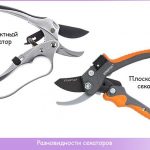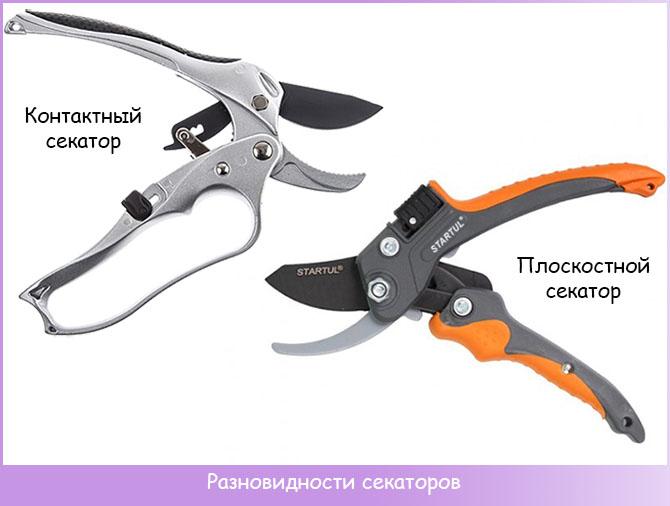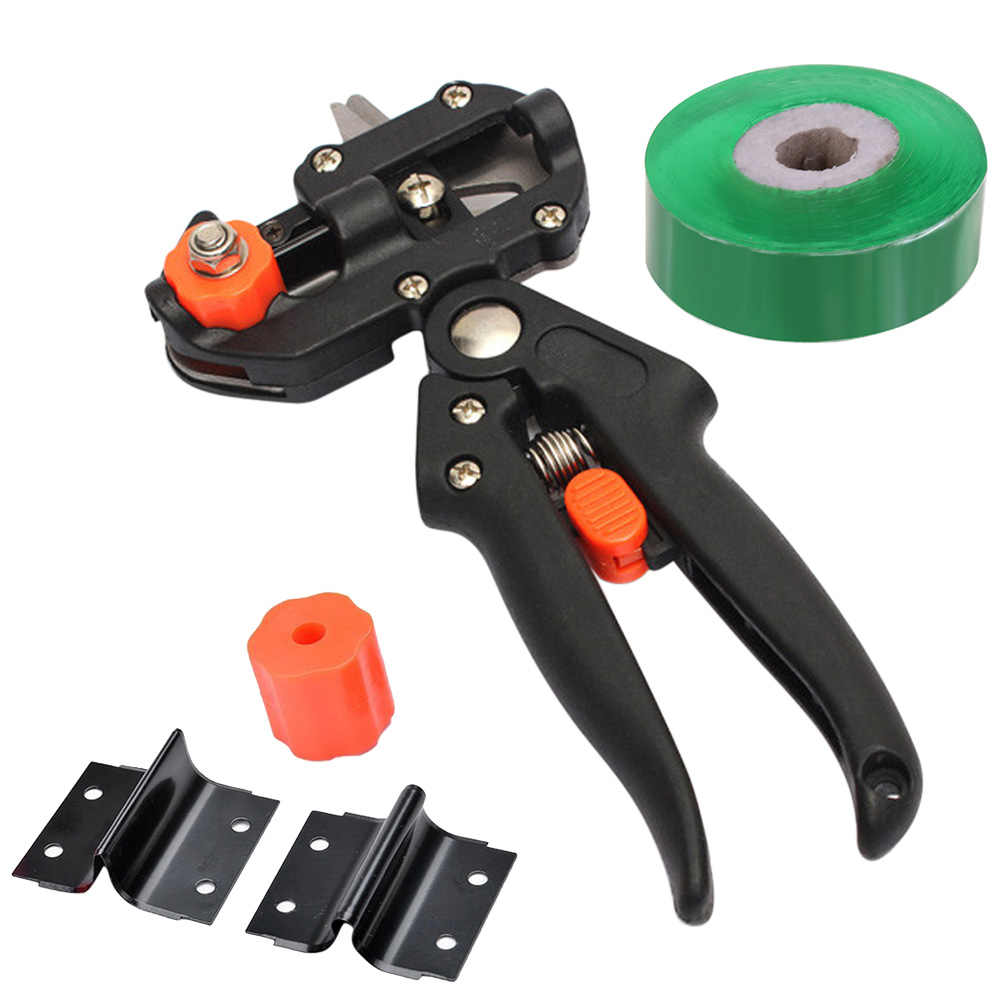Types of pruners and their purpose
Complete garden care is impossible without secateurs. This tool allows you to carry out the necessary pruning of trees without causing harm to them. There are several types of it, differing in design, scope and other parameters. A novice gardener may not know which tool to choose for a specific task. Having understood this issue, it will be easier to properly care for plants.
The content of the article
Types of pruners by purpose
When caring for a garden, sometimes you need to trim dry branches or living stems. The latter is necessary when forming the crown of bushes, young shoots, for processing grapevines, and cutting cuttings during vegetative propagation. For different jobs, tools with unequal contraction (compression) of scissors are used. According to this type, pruners are divided into the following types:
- planar (circumferential) - equipped with two cutting surfaces, they carefully make a cut without damaging the structure, and are intended for caring for living plants;
- contact - consist of a working cutting blade and a wide plate with a recess, called an anvil, used to remove dry branches up to 3 cm in diameter;
- garden shears - equipped with two parallel blades, the cutting edges of which are overlapping, designed for processing thin stems.
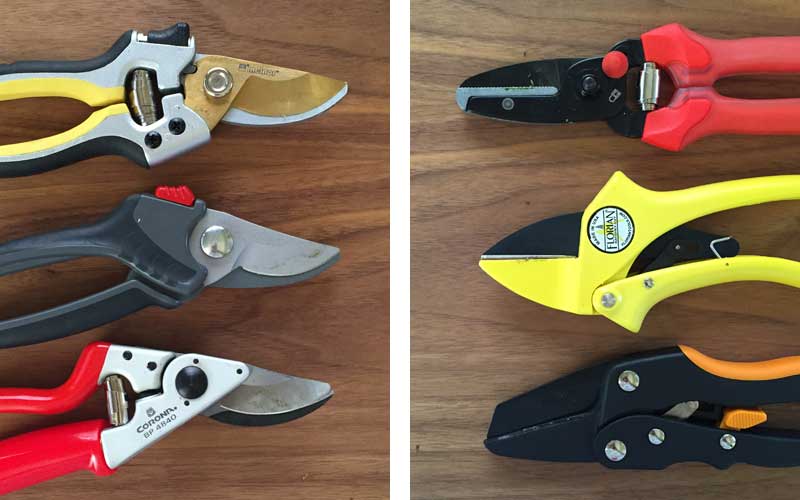
Classification by mechanism
The listed types of tools, in turn, are divided by type of mechanism and are:
- Traditional. They are supplied with garden shears or inexpensive models of other types of pruning shears. In a tool with such a mechanism, both handles move evenly in relation to each other. This device is used for thin branches.
- Lever. Allows you to distribute the force evenly between all fingers. This significantly reduces hand strain and fatigue during plant care. This type of tool can also work with thick stems.
- Ratchet. Performs pruning in several steps. This minimizes the effort required to operate. Copes with thick branches, but has lower productivity compared to the previous one.
- By force. This mechanism allows you to significantly increase the cutting force - it is performed in one click. Designed for processing thick branches.
Other types of pruning shears drive
In addition to classic mechanical models, there are tools powered by electricity, pneumatic and hydraulic. The former are divided into mains-powered and battery-powered and are used for all types of pruning, including decorative and in hard-to-reach places.
The pneumatic power supply comes from the pneumatic line where the compressor is activated.
The secateurs, driven by a hydraulic pump, cope with very thick branches.
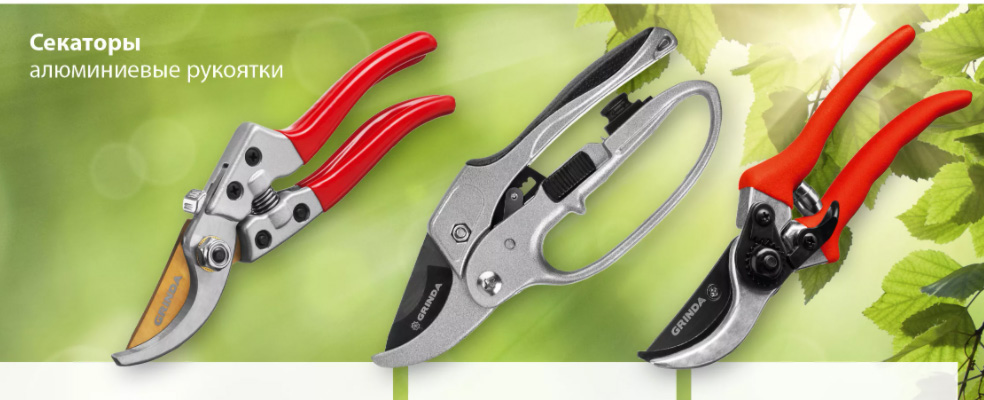
Types of pruning shears for specific applications
This classification of tools is based on the type of plant or work for which they are intended. These pruners differ in shape and some technical characteristics. There are:
- grafting - a professional device with a figured knife for making a mirror cut on the rootstock and scion for their precise connection;
- floristic (flower) - designed as a flat tool, without any power mechanisms, similar to scissors, used for working with annual plants;
- for curly haircuts - a device with straight blades and handles connected in the form of a bow, used for pruning trees and small bushes;
- for grapes - this tool can be of any type: flat or contact, and the design depends on the purpose of use (for pruning stepsons and forming a vine in the spring-summer period, processing an adult plant, etc.).
The information provided will help you choose the right tool to solve specific problems. In addition to the appearance, you should pay attention to the quality of the material and the reliability of the fastening elements.

